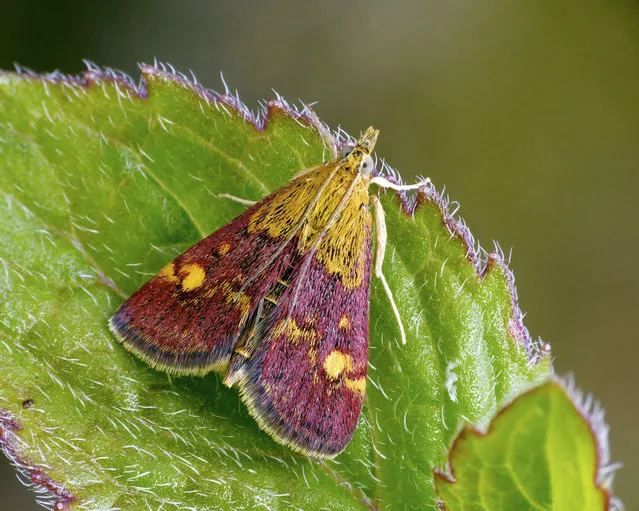
A mint moth – a pyralid or “micro-moth” native to Britain and found among garden herbs. Wildlife experts have said almost 30 new species of micro-moths have been recorded in the UK in the last 30 years, including eight which have become established residents. (Photo by Patrick Clement/Butterfly Conser/PA Wire)
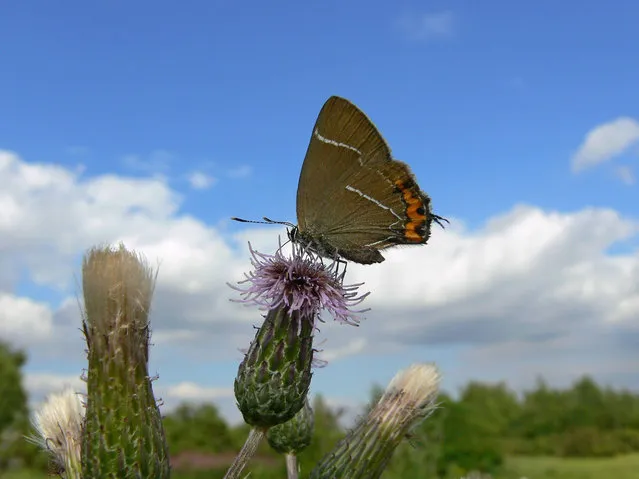
A white-letter hairstreak butterfly – experts have said that the butterfly, whose numbers have seen dramatic declines in recent years, is breeding in Scotland for the first time in 130 years. (Photo by Tim Melling/Butterfly Conservati/PA Wire)
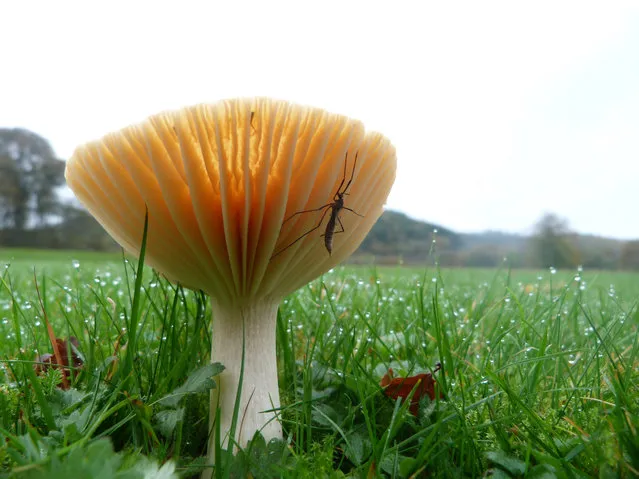
A waxcap fungus with cranefly on the gills, UK, one of a few species to benefit from the wet August weather. (Photo by Corrinne Manning/National Trust Images)
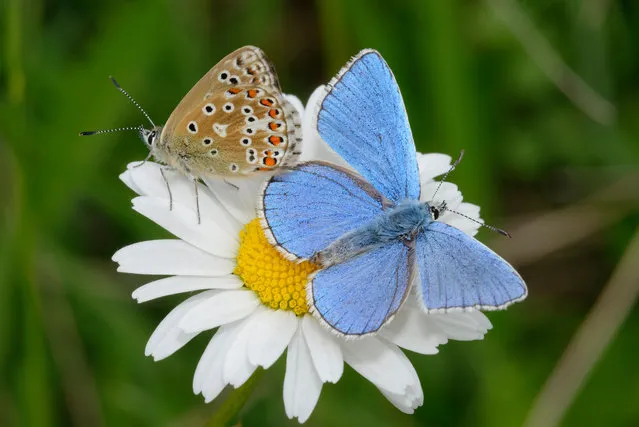
An Adonis blue butterfly pair on an oxeye daisy in the Cotswolds, England. (Photo by Martin Fowler/Alamy Stock Photo)
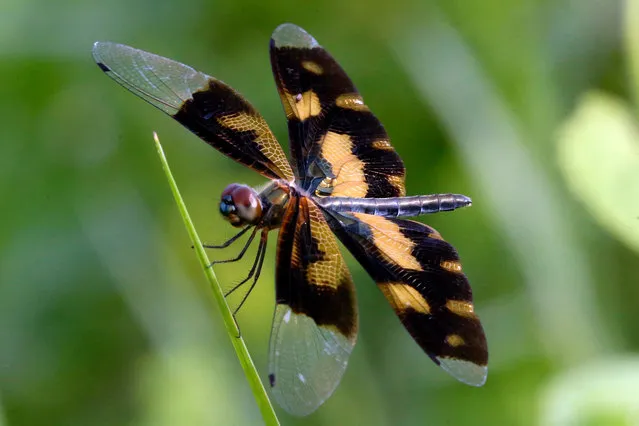
A Pied Parasol Dragonfly in search of early morning prey resting on a blade of grass in Biodiversity Study Park at Thalawathugoda in Colombo, Sri Lanka, 21 May 2018. Sri Lanka is home for much of the 124 dragonfly species in with 52 being endemic. These insects though yet to prove harmful to agriculture or horticulture, bring awe in children who love watching them fly and hover. (Photo by M.A.Pushpa Kumara/EPA/EFE)
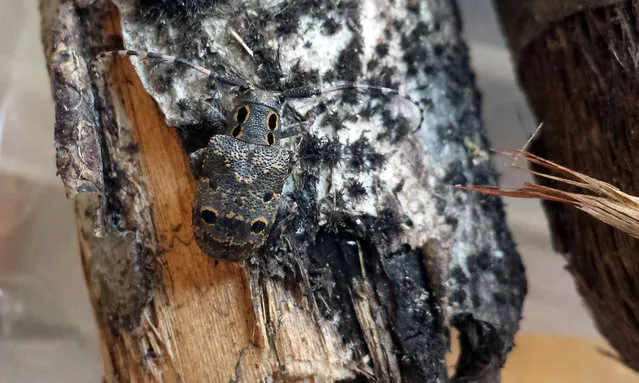
This handout picture obtained from the International Union for Conservation of Nature (IUCN) on March 5, 2018 shows a Mesosa Curculionoides beetle on a tree. Nearly a fifth of 700 beetle species surveyed in Europe face extinction because the old, decaying trees they depend on have been cleared from forests, scientists warned on March 5, 2018. Many saproxylic – literally, “dead wood” – beetles could disappear if remaining old- growth trees are not allowed to decline naturally, according to a report by the International Union for Conservation of Nature (IUCN), which maintains the Red List of endangered animals and plants worldwide. (Photo by Benoit Dodelin/AFP Photo)
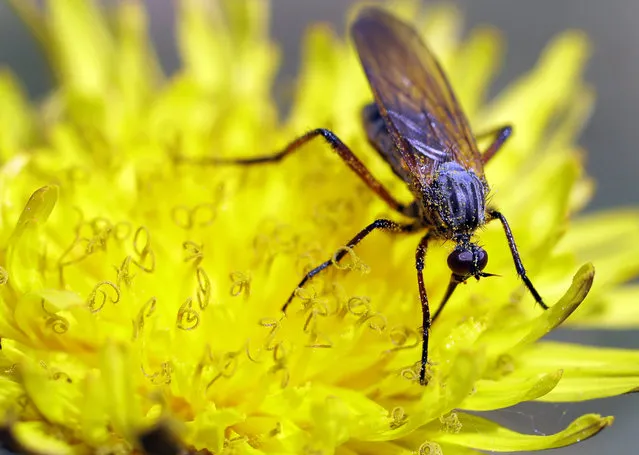
A fly eats the nectar of dandelion flower in a forest on the outskirts of Minsk, Belarus, Monday, May 14, 2018, during a spring sunny day. (Photo by Sergei Grits/AP Photo)
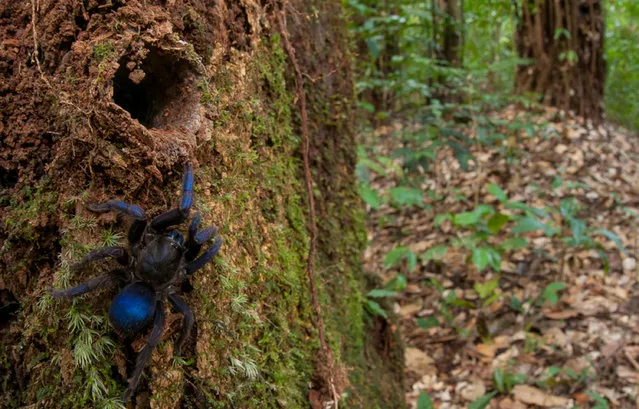
A cobalt-blue tarantula – one of 31 species discovered in the Guyana rainforest. (Photo by Andrew Snyder/World Wildlife Fund/Global Wildlife Conservation)
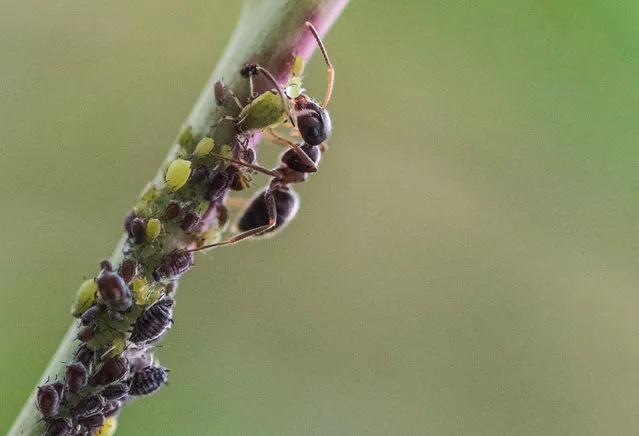
An ant milks honeydew from aphids in a garden in Rottweil, southern Germany on June 6, 2018. (Photo by Silas Stein/AFP/DPA)
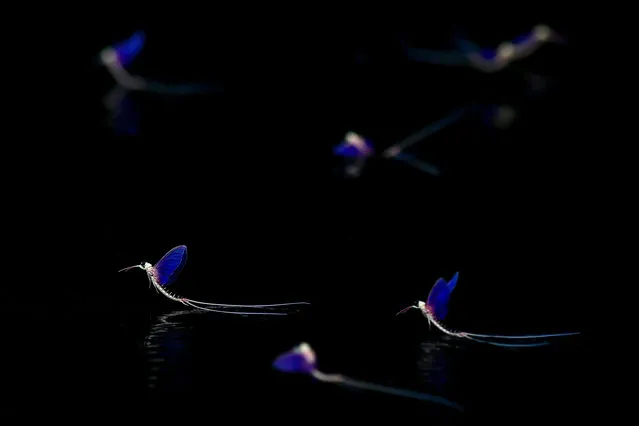
Freshly hatched mayflies or ephemeras (Palingenia longicauda) crowd the surface of River Tisza near Tiszacsege, 170 kms east of Budapest, Hungary, 10 June 2018. Mayflies are water insects, after the females drop their eggs into the water, the nymphs or naiads spend three years at the bottom of the river before they emerge to the surface. Every year from late spring to early summer a natural spectacle called “Tisza blooming” happens on the surface of River Tisza as the adult insects molt their larva skins. The adult insects take flight, swarming in huge clouds, and after mating, females lay eggs on the river's surface, then both sexes perish in just a few hours. (Photo by Zsolt Czegledi/EPA/EFE)
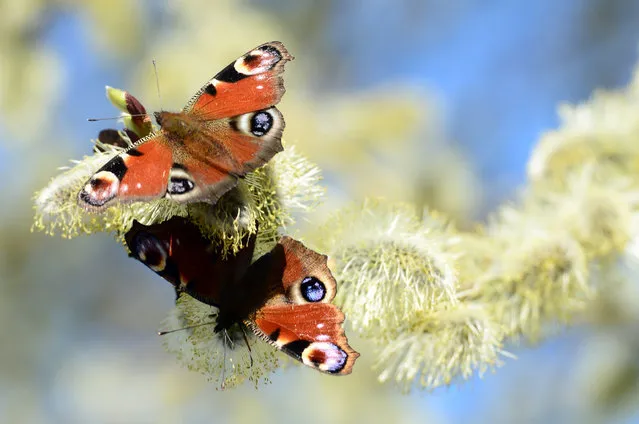
Peacock butterflies during a sunny day in Jicin, Czech Republic on April 9, 2018. British butterflies suffered their seventh worst year on record in 2017. (Photo by Slavek Ruta/Rex Features/Shutterstock)
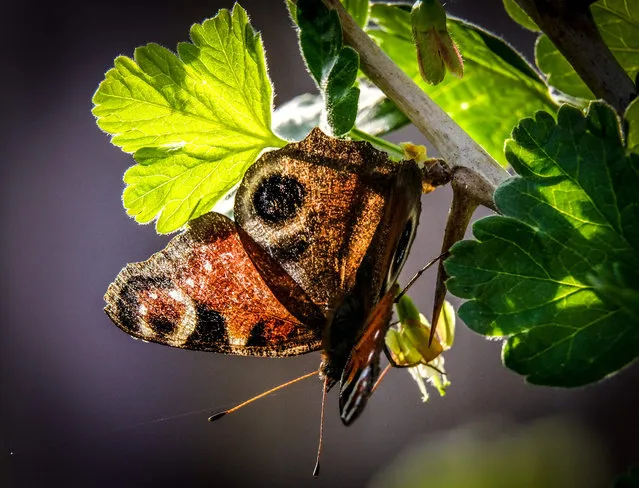
An emperor moth (Saturnia) butterfly sits on a currant bush at a garden outside Moscow on May 4, 2018. (Photo by Yuri Kadobnov/AFP Photo)
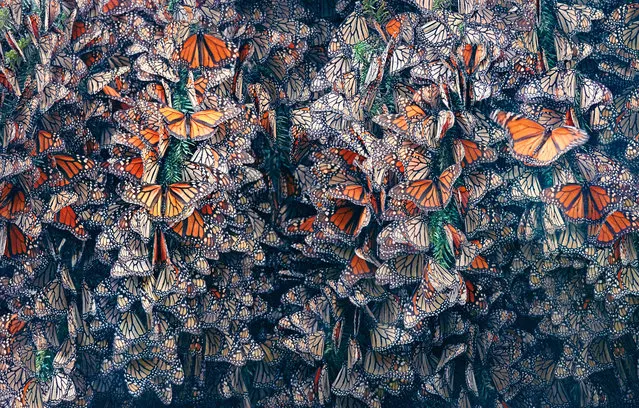
Monarch butterflies, Danaus plexippus, from photographer Tim Flach’s latest book Endangered, with text by zoologist Jonathan Baillie. (Photo by Tim Flash/Abrams & Chronicle Books)
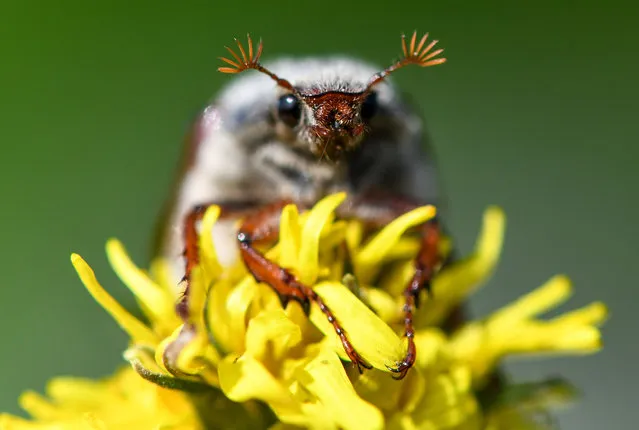
A may beetle crawling over a dandelion on April 24, 2018 in Oberrotweil, Germany. The bugs are out due to the mild temperatures in April. (Photo by Patrick Seeger/DPA)

File photo taken on August 23, 2017 shows a giant mosquito with a body length of nearly 5 centimeters is shown at the Insect Museum of West China in Chengdu, capital of SW China's Sichuan Province. The mosquito belongs to the world's largest mosquito species Holorusia mikado, which normally have a wing span of about eight centimeters. The mosquito was found in August, 2017 during a field trip to Mount Qingcheng in Chengdu. (Photo by Xinhua News Agency/Insect Museum of West China/Barcroft Images)
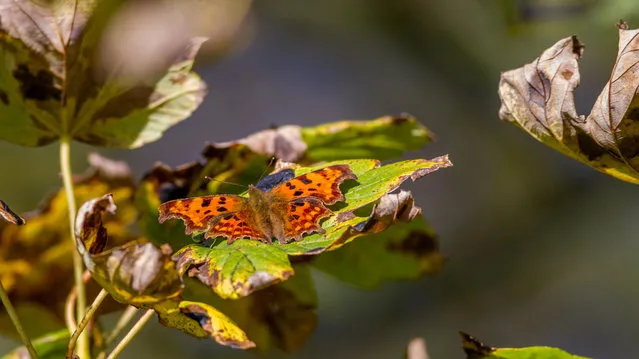
A comma butterfly rests in the autumn sunshine, Burley Woodhead, West Yorkshire, UK. (Photo by Rebecca Cole/Alamy Stock Photo)
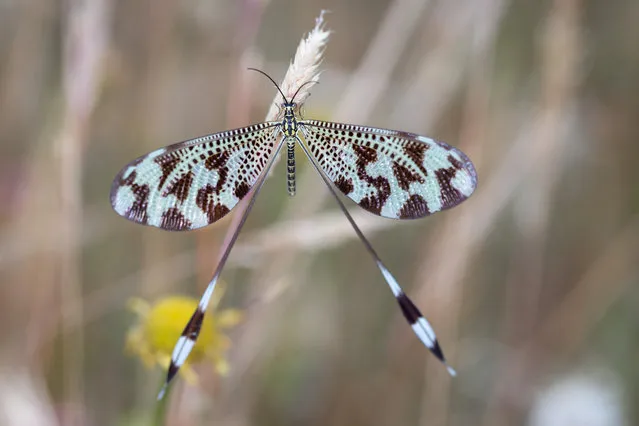
Nemoptera coa in its natural environment, Spain. (Photo by Eduardo Estellez/Alamy Stock Photo)
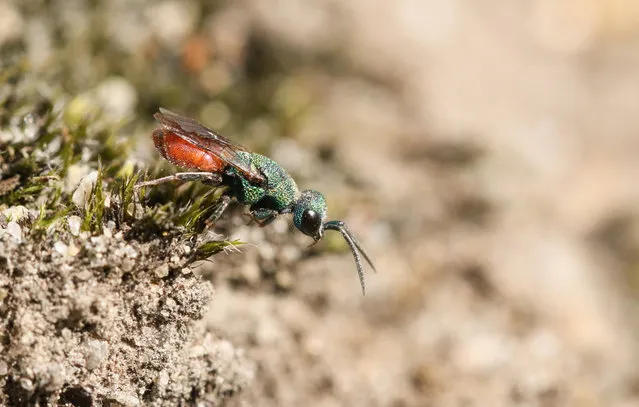
A tiny ruby-tailed wasp perched on moss on the ground, UK. (Photo by Sandra Standbridge/Alamy Stock Photo)
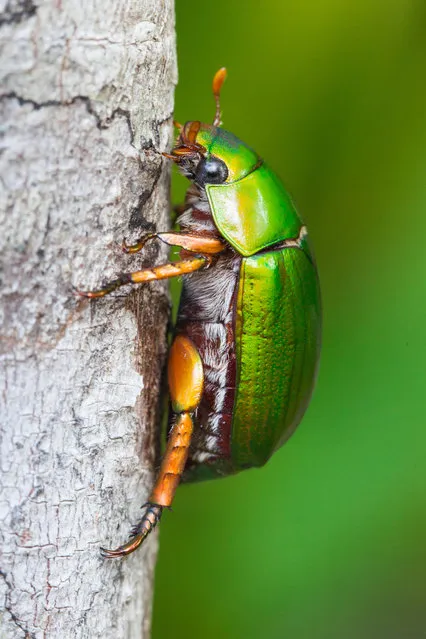
A Christmas beetle in Cow Bay, Australia. (Photo by Dave Pinson/Alamy Stock Photo)
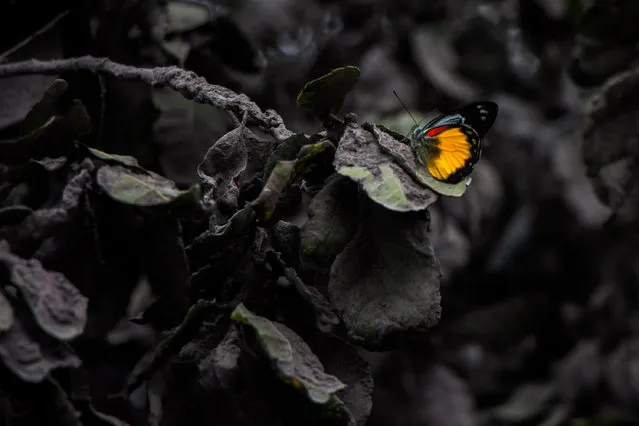
Red zone area covered with thick volcanic dust at Pura Pasar Agung on December 2, 2017 in Bali, Indonesia. After the eruption of Mount Agung a week ago some areas in Bali were covered by volcanic ash. (Photo by Solo Imaji/Barcroft Media)
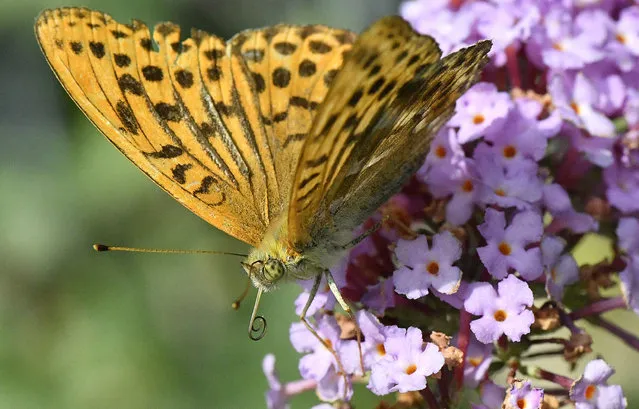
A “dark green fritillary” butterfly enjoys a sunny and warm summer day on a blossom in Gelsenkirchen, Germany, Monday, August 21, 2017. (Photo by Martin Meissner/AP Photo)
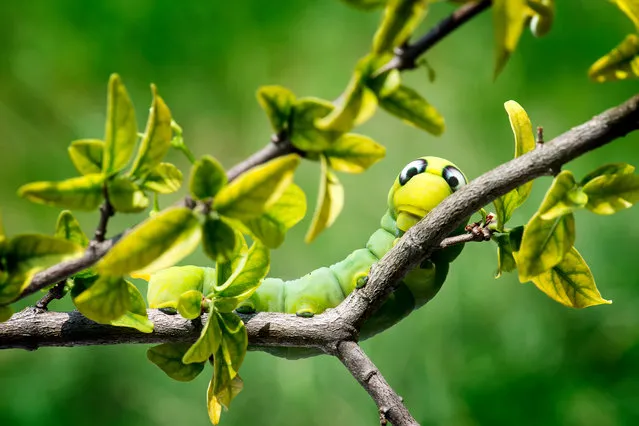
An oleander hawk moth caterpillar in Thailand. (Photo by Nopadol Uengbunchoo/Alamy Stock Photo)
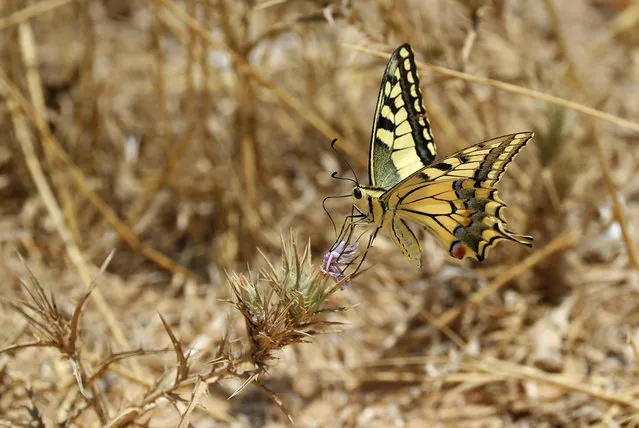
A picture taken on May 29, 2018 along the border between Israel and the Gaza Strip shows a Papilio Machaon butterfly on a thistle stem. (Photo by Jack Guez/AFP Photo)
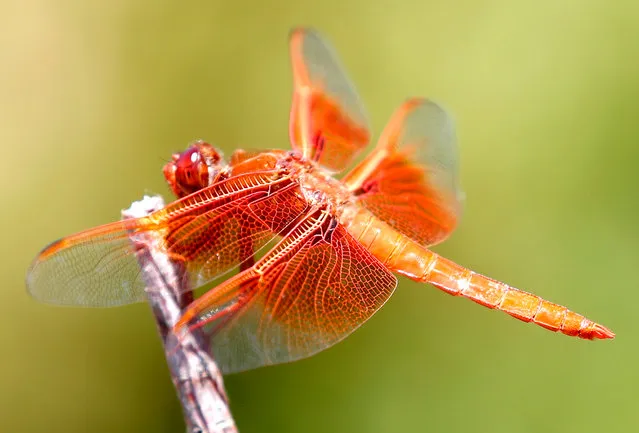
A Flame Skimmer or Firecracker Skimmer dragonfly (Libellula saturata) rests on a small branch in Topanga, California, USA, 18 June 2018. The Flame Skimmer dragonfly is found in the Western United States near ponds and creeks. (Photo by Mike Nelson/EPA/EFE)
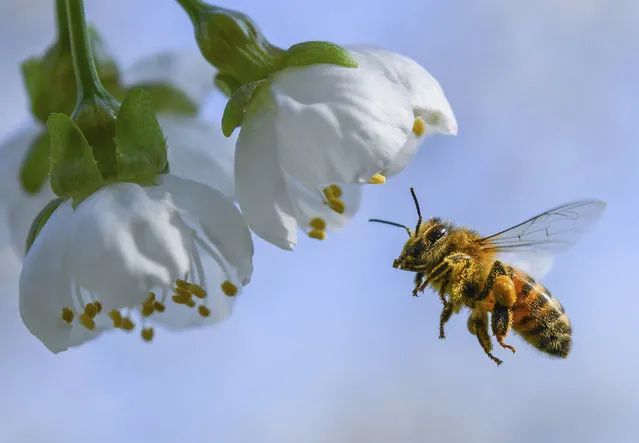
A honeybee flies towards a cherry tree blossom in Markendorf, Germany, Thursday, April 19, 2018. (Photo by Patrick Pleul/DPA via AP Photo)
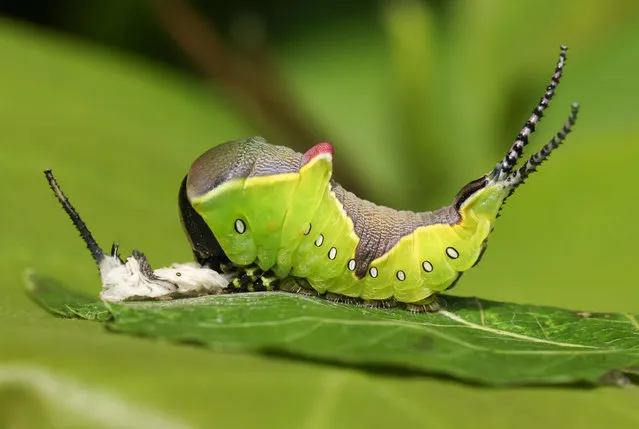
A Puss moth caterpillar resting on an aspen tree leaf just after it has shed its skin, United Kingdom. (Photo by Sandra Standbridge/Alamy Stock Photo)
24 Jun 2018 00:03:00,
post received
0 comments
